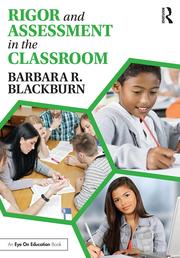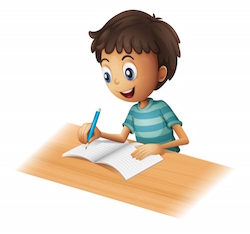Helping Students Track Their Own Progress
When I’m too busy, I often realize that I have switched my focus from quality to quantity and have mistaken movement for achievement. Have you ever done that in your classroom?
It is an important part of the learning process to pause and reflect on what we have done and how we have done it — or in a classroom, what we have learned and how we have learned it.
Learning something new can be frustrating. Most of us aren’t perfect the first time we attempt something. And if we aren’t careful, we give up before we truly begin. It’s human nature to want to see progress quickly.
Have you ever tried to lose weight? If so, you know how hard it is to think about losing 30 pounds. That seems so far away, and almost too much to attempt. So if we’re smart, we track progress weekly and celebrate the small steps such as losing five pounds or losing ten pounds.
Why do we do that? Because tracking progress toward a larger goal helps us build a sense of competence and achievement, which leads to increased self-confidence, which then gives us courage to keep going.
That’s the same cycle you want to build in your students.
Here I’m going to specifically talk about tracking progress in learning, but the same principles apply to tracking other types of progress, such as behavior. You can do this formally or informally. Typically, we use formal indicators for measuring content knowledge and informal ones (if any) to track learning processes. However, you can blend the strategies together in a way that works best for you and your students.
There are many informal ways to check for understanding. Exit slips, pieces of paper students must give you like a ticket out the door, are effective and they can help students, too.
At the end of class, simply ask them to write down the main thing they learned and a question they have. You can quickly scan the slips to see how much of the lesson stuck with them and what you need to reinforce the next day.
You can also wait until the next morning and have students write a short journal entry telling you the same information to use as a springboard for review. Or the journal can be used as a learning log. Every day at the end of class, students write down at least one thing they learned. By the end of the week, they have a list of at least five things they have learned, by the end of the month they have 20, and so on. This is more authentic than a test, and it allows students to see and personalize what they are learning.
Keeping Track of How I’m Learning
Another important facet of measuring growth is to track improvement in the use of learning strategies. I did not do this well as a young teacher; but if I had my own classroom again, this would be a foundational part. Students need to think about how they learn and keep track of what works, what doesn’t, and how that changes over time.
Kendra Alston does this exceptionally well with her students. She starts each year asking them to write about their favorite teacher and what made that teacher outstanding. By analyzing the characteristics of those teachers, she is able to discover some of their trigger points for learning. Then she applies that knowledge in her own teaching to better connect with each student.

“Over this quarter, I’ve learned many things. One thing I’ve learned is teachers mean business and don’t take kindly to slacking. I found that out the hard way. Another thing is that if you take the time to listen, teachers have a lot of helpful tips for passing the school year.” – Justin, end of first nine weeks
“Something else that I learned would be about text organizers such as title, headings, caption/photograph, sidebars, and tags. Text organizers were not that confusing. At first I was getting tags and headings mixed up, but shortly I begin to understand them by the hands-on labs…I found that I understand the lessons better when we are able to do hands-on and get to experience and find what it is about ourselves.” – Melissa, end of first nine weeks
How would your students respond if asked to write about their own learning? Would they agree with Justin that it’s important to listen to teachers? Or might they identify with Melissa, who learns best by doing?
Or do you have a Karina in your room, who realizes that working hard on an assignment results in a better grade? More important, what do you learn about yourself as a teacher when your students share comments such as these?
Keeping Track of Success
Another way to help your students track their progress is to have them keep a Victory List. This can be in the back of their journals or student agendas; it just needs to be somewhere they can readily access it. A Victory List is simply a personal list of successes. It includes items such as
I made a B on my paper.
- I drew a good picture.
- I didn’t fight with Candace.
- I remembered that if I draw something, it helps me learn a new word.
- I took my paper home and Mom was proud of me.
- I learned to put commas in the right places.
- I’m the class expert on google slides.
- Teacher says I’m ready for pre-algebra next year.
The purpose of a victory list is to help us remember what we have accomplished, particularly when things aren’t going so well. I’ve had this conversation with teachers who were my graduate students many times. They come in to see me, worried about an assignment—particularly if there’s a lot going on in their schools, and they are feeling pressed for time.
After they finish talking, I remind them of all the other assignments they successfully completed, then I say, “I know you can do this one, too. After all, you did well on all the others, and they were also difficult. If you could do them, you can do this one.”
Sometimes when our students are struggling, they forget all that they’ve accomplished. It helps to create a track record of breaking your own mold, or at least other people’s idea of that mold.
Another purpose for a victory list is to help undo any failure messages in our heads. We remember losses far longer than we remember successes. Keeping a concrete list of successes is a constant visual reminder of progress.
Watch Them Thrive
Helping students track their progress of what they learn, how they learn, and when they’ve been successful are all important parts of teaching. Build in structures in your classroom to make these things happen and watch your students thrive!
__________





































